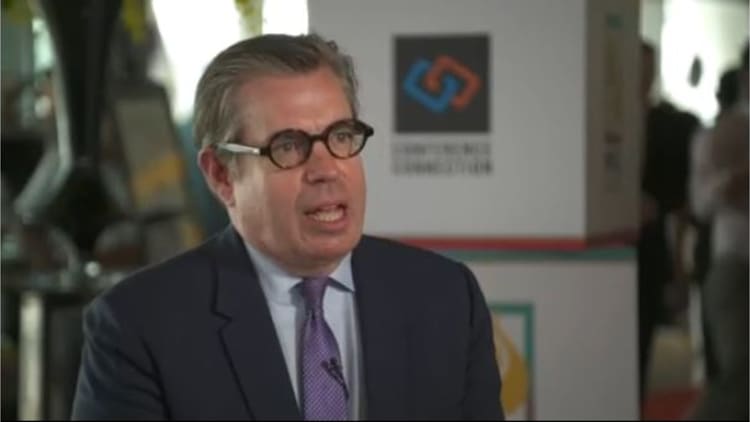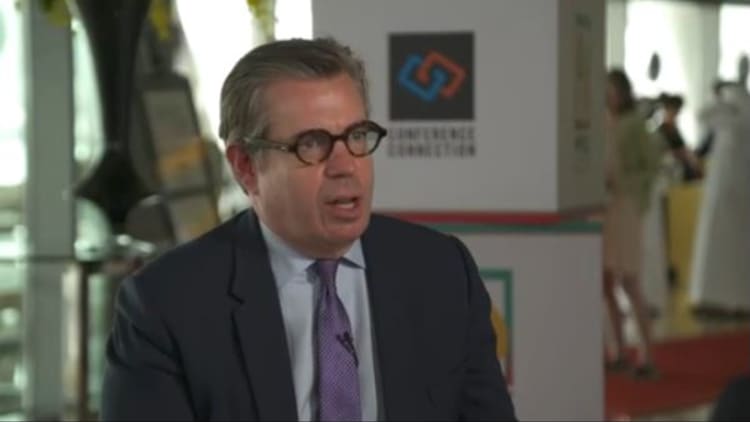
DUBAI — Oil won't be returning to the peak levels it saw last year when global benchmark Brent crude hit $86 a barrel, Goldman Sachs' top commodities analyst said Monday.
"We've had a really bad fourth quarter, so the question is 'how much have we recouped thus far?'" Jeff Currie, Goldman Sachs' head of commodities research, told CNBC's Dan Murphy at the 27th Annual Middle East Petroleum and Gas Conference in Dubai.
"Looking at oil more broadly... We don't think you're going to get back to those $80 levels again, so you've got some modest upside here."
"It's been a fundamental deficit, lower inventories pushing cash in physical prices higher," Currie said. "This market is in a million barrel per day deficit right now, and we think upside price is $70 to $75 (per barrel), but the back end anchored around $60," he said."
That back end low, he explained, is based on three things: expansion of pipelines in Texas's shale-rich Permian Basin in the third quarter of this year, OPEC potentially exiting its oil cut program because investments are likely to reach the five-year average sometime in May, and more supply coming in from non-OPEC members.
"That's what is going to keep the back end under pressure, lower inventories pushing prices to $70, to $75, that's where the investment opportunity is — but it's not going to be like what we saw in quarters three or four of last year."
Demand is 'rock solid'
Crude futures have surged in recent months, with Brent and U.S. West Texas Intermediate (WTI) both rallying more than 20 percent since the start of 2019. International benchmark Brent crude stood at $70 a barrel on Monday, with WTI trading at around $63.
Numerous analysts believe that more upside is in store with supplies being taken off the market in Iran and Venezuela, as well as potentially continued supply cuts from major oil organization OPEC.

While markets have been held back in recent months over fears about global demand, this is one area in which the Goldman Sachs analyst is completely confident.
Asked if he saw any evidence that oil demand is beginning to decline, Currie replied: "No — absolutely the opposite. Commodities demand is relatively rock solid, demand is so solid in China right now ... Bottom line, demand looks really good right now."
What's the major black swan?
But as for any black swans going forward, Currie sees the greatest risk lying in individual countries' policy changes.
"When you think about what we've learned over the last year — OPEC has shown its ability to increase production very high, reduce production substantially, so a lot of flexibility there," he said.
"What have we learned about China? They can stimulate and they can de-lever. We've seen a big stimulus in January, but de-levering last year. What have we seen with the U.S.? They've gone hawkish and they've gone doveish."
"What that starts to do is take out your tail risk both to the upside as well to the downside," Currie continued. "So your question is: Where does the risk in the system go? If we think about it, if it's the policymaker swinging policy back and forth, that is where the risk really needs to start to reside, it goes in the sovereign balance sheets ... So if I look at it, a black swan event, more likely than not it's probably going to come out of one of the sovereigns."


